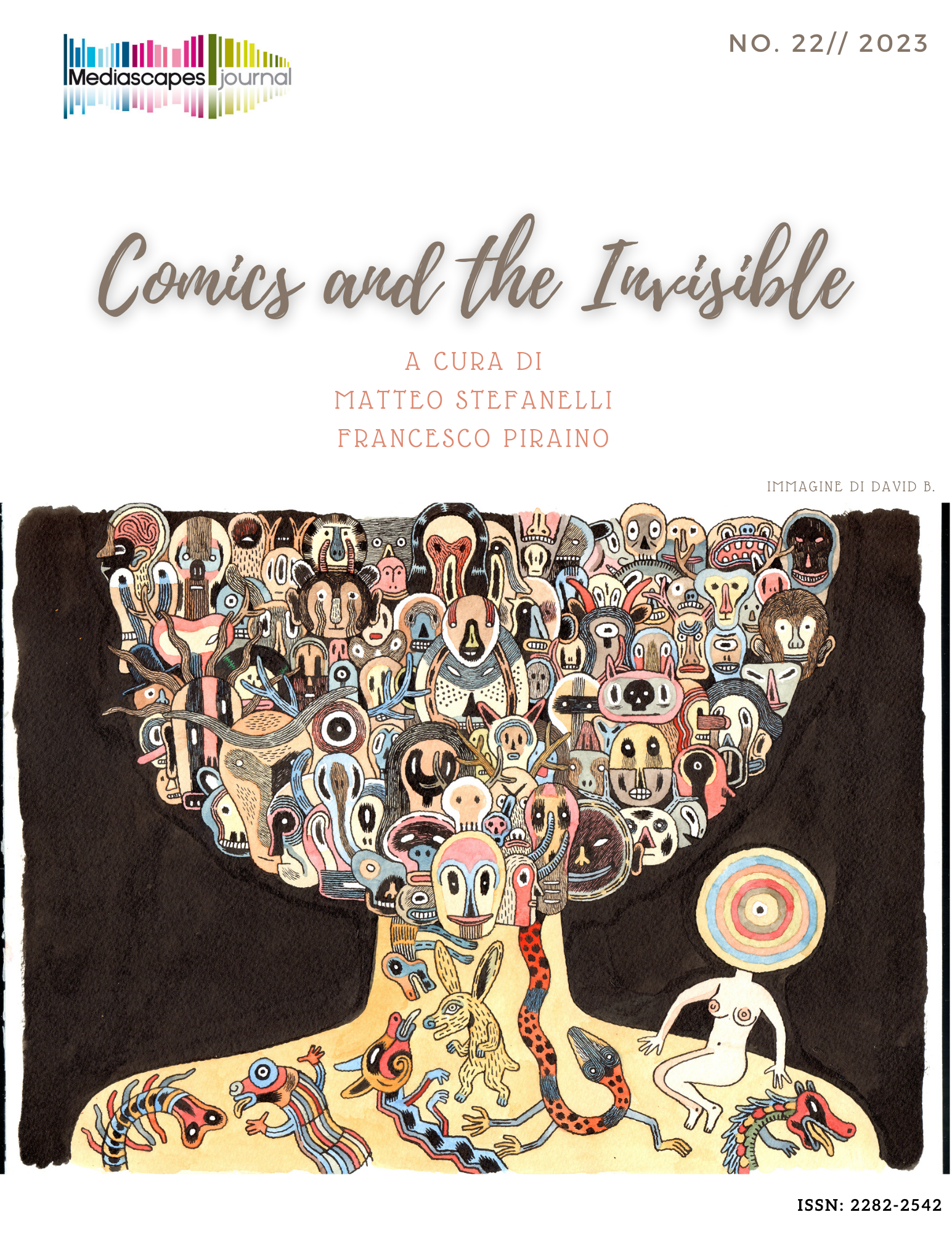Lived and abandoned spaces
Invisibilities in comparison
Parole chiave:
Italian comics, province, spaces, hauntologyAbstract
The paper aims to propose a close reading of three non-serial comics, published in Italy after 2019, with a focus on the representation of spaces and the specific invisibilities they convey and communicate. The texts selected for the analysis are Malibu by Eliana Albertini, Padovaland by Miguel Vila, and 24/7 by Nova, as all three texts tell a story that takes place in a marginal environment such as the Italian province.
The paper will begin by defining the theoretical framework of reference, based on the geocritical perspective to literary texts (Tanca, Peterle) and the notion of hauntology proposed by Jacques Derrida and reworked by Mark Fisher. The analysis will begin by considering some general aspects of the representation of the province in the three comics, identifying the main features of that environment considered as a space-time.
The paper will then proceed to a comparison between commercial space and abandoned space: the ways in which these are represented will be analyzed, emphasizing the presences-absences that haunt the spaces, according to the hauntological perspective. These two typologies were chosen because they are exemplary, both within history and in the imaginary: non-place the former (Augé) and characterized by a system of rules, heterotopia the latter (Foucault), a place with a history and devoid of a regulating authority.
From the analysis it will be possible to define some of their peculiar characteristics: the commercial space will emerge as an environment that seeks to impose a precise temporality that is always the same; on the other hand, the abandoned place will be opposite but still in a dialectical relationship with the former, as it is unregulated and capable of hosting a temporality different from that of the rest of the provincial environment. These presences will be related to the question of visibility: the commercial space will emerge as overseer, endowed with a gaze, while the abandoned place is itself invisibilized and thus capable of hiding those who pass through it from the gaze of the province. This analysis finds its ideal field of study in the comics medium for several reasons: the invisible is an integral part of the grammar of comics (McCloud, Rey) and by its very nature it is forced to carefully select what it includes in its spaces (panels and pages) (Barbieri) leaving ample space for what it excludes, which remains invisible but nonetheless present; on the other hand, comics, as a visual medium, represent the story in a space, more or less mimetic with respect to what we call reality. This characteristic allows us to relate the representations, to map places both physical and belonging to the imaginary (Peterle) and to propose an analysis that is also a comparison of the different forms of invisibility related to the places of our imaginary, lived and visible, abandoned and invisible, and the possibilities that comics offer to tell them.
##submission.downloads##
Pubblicato
Come citare
Fascicolo
Sezione
Licenza

TQuesto lavoro è fornito con la licenza Creative Commons Attribuzione 4.0 Internazionale.
Gli autori che pubblicano su questa rivista accettano le seguenti condizioni:
- Gli autori mantengono i diritti sulla loro opera e cedono alla rivista il diritto di prima pubblicazione dell'opera, contemporaneamente licenziata sotto una Licenza Creative Commons - Attribuzione che permette ad altri di condividere l'opera indicando la paternità intellettuale e la prima pubblicazione su questa rivista.
- Gli autori possono aderire ad altri accordi di licenza non esclusiva per la distribuzione della versione dell'opera pubblicata (es. depositarla in un archivio istituzionale o pubblicarla in una monografia), a patto di indicare che la prima pubblicazione è avvenuta su questa rivista.
- Gli autori possono diffondere la loro opera online (es. in repository istituzionali o nel loro sito web) prima e durante il processo di submission, poiché può portare a scambi produttivi e aumentare le citazioni dell'opera pubblicata (Vedi The Effect of Open Access).


